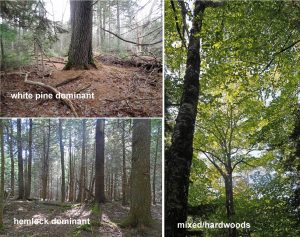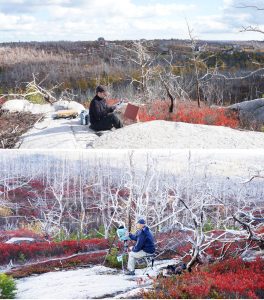
Geoffrey Grantham and Ron Kuwahara paint en plein air in the Jack Pine-Crowberry barrens on Nov 2, 2015, 6 years after 2009 ‘Spryfield Fire’.
Click on image for larger version
Online presentation by David Patriquin to the NS Wild Flora Society, 7:30 p.m. Monday Oct 23, 2023. All welcome.
The “Backlands”, located only a few kilometers from from peninsular Halifax, NS, are a Thompsonesque urban wilderness of approximately 1350 hectares which include nine lakes, hills with spectacular views and dozens of kilometers of informal hiking and biking trails. Erratic blocks, whalebacks and boulder fields are prominent features of the glacially scoured rocky landscape. It is also one of the most fire-susceptible landscapes in Nova Scotia, with recurrent fires pre-dating European settlement. One result is the presence of highly fire-adapted plant communities including the globally rare ‘Jack Pine/Broom Crowberry Barrens’.
David will describe the plant communities, their fire ecology, and discuss what’s involved in managing fire to conserve these ecosystems while at the same time protecting structures and people at the Urban-Wildland Interface.
For more about the area, visit www.backlandscoalition.ca.
David Patriquin, Professor of Biology at Dalhousie University (retired 2008) is involved in conservation-oriented activities with several local natural history, trail and environmental organizations.
To register for this event and receive a link for the Zoom session, contact novascotiawildflora@gmail.com

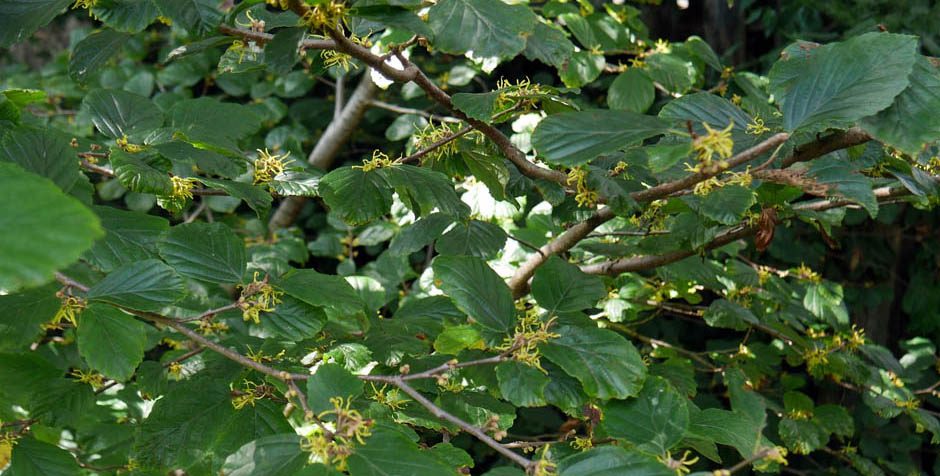
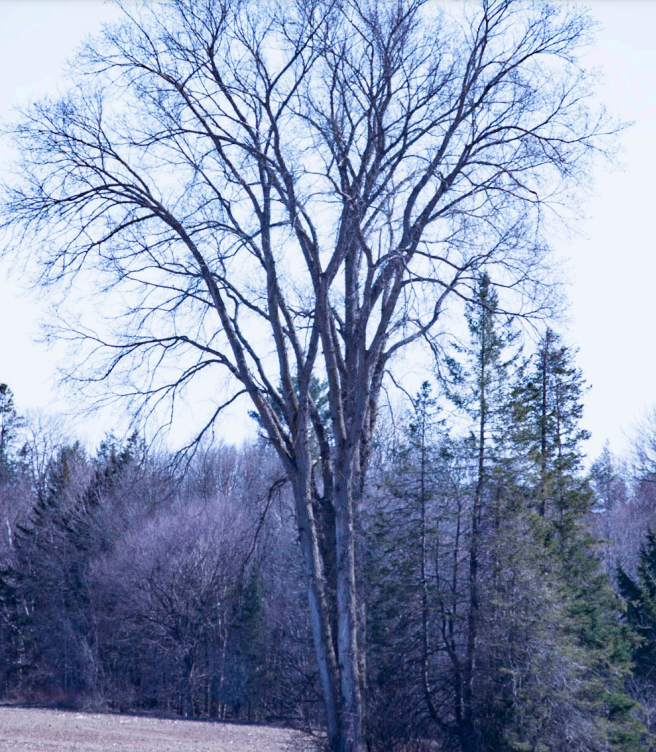 Description: Winter is a wonderful time to get to know the trees and woody plants of the Northern Forest. Without the distractions of summer leaves, we can focus on the more enduring characteristics of the woody members of forest habitats. In this seminar, we will take a wholistic approach to winter plant identification, integrating information of many types, including habitat, growth form, bark, needles and leaf remnants, fruit, twig arrangement, and buds. We will discuss aspects of dendrology, forest ecology, and plant anatomy as they relate to winter identification of woody plants. The seminar will consist of weekly interactive lectures and discussions with field challenge assignments to collect photographic observations of woody plants in nearby forests or parks. We will share these photographic observations through a citizen science course project on iNaturalist. Participants who are not able to access forests in winter may focus their efforts on assisting with identification and curation of the online course project collection.
Description: Winter is a wonderful time to get to know the trees and woody plants of the Northern Forest. Without the distractions of summer leaves, we can focus on the more enduring characteristics of the woody members of forest habitats. In this seminar, we will take a wholistic approach to winter plant identification, integrating information of many types, including habitat, growth form, bark, needles and leaf remnants, fruit, twig arrangement, and buds. We will discuss aspects of dendrology, forest ecology, and plant anatomy as they relate to winter identification of woody plants. The seminar will consist of weekly interactive lectures and discussions with field challenge assignments to collect photographic observations of woody plants in nearby forests or parks. We will share these photographic observations through a citizen science course project on iNaturalist. Participants who are not able to access forests in winter may focus their efforts on assisting with identification and curation of the online course project collection.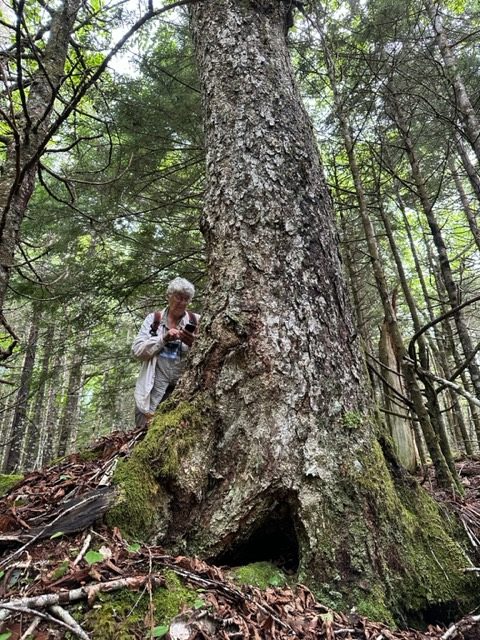



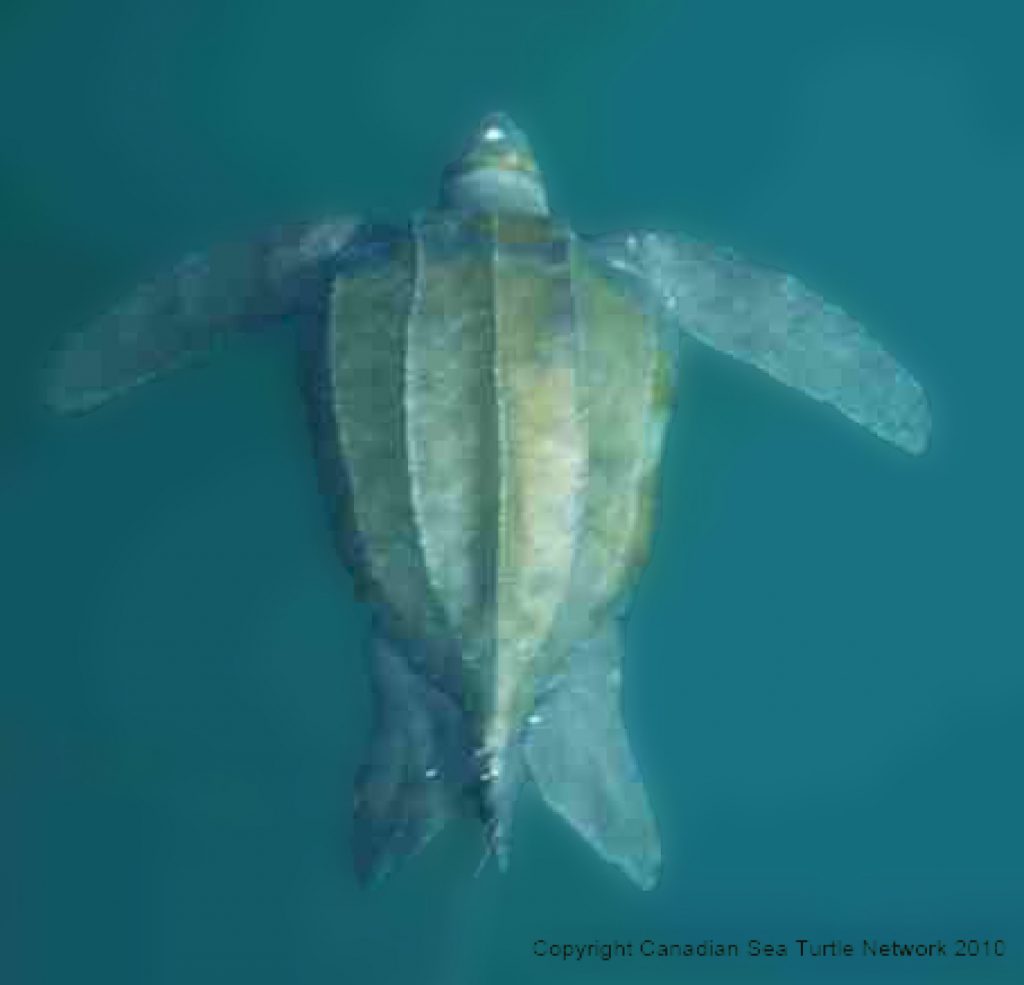 Every fall for the past many years the Sea Turtle Beach Patrol runs a beach patrol program from November 1 to January 31 where they ask volunteers to walk a beach of their choosing once a week looking for cold-stunned hard-shelled sea turtles. “Cold-stunning” is basically hypothermia for sea turtles, which occurs when the water they are in drops to and below 10degrees. Most years they find one or two either dead or almost dead juvenile Green or Kemp Ridley’s sea turtles. By consider the warming oceans and the experiences of our neighbours to the south, they are expecting these stranding events to become more common. Massachusetts for example, has gone from 0 to over 800 cold-stunned turtles in the past 20 years. These turtles, when found alive, require professional warming and monitoring, and sometimes transportation to a rehabilitation Centre. They can’t be put back into the cold ocean.
Every fall for the past many years the Sea Turtle Beach Patrol runs a beach patrol program from November 1 to January 31 where they ask volunteers to walk a beach of their choosing once a week looking for cold-stunned hard-shelled sea turtles. “Cold-stunning” is basically hypothermia for sea turtles, which occurs when the water they are in drops to and below 10degrees. Most years they find one or two either dead or almost dead juvenile Green or Kemp Ridley’s sea turtles. By consider the warming oceans and the experiences of our neighbours to the south, they are expecting these stranding events to become more common. Massachusetts for example, has gone from 0 to over 800 cold-stunned turtles in the past 20 years. These turtles, when found alive, require professional warming and monitoring, and sometimes transportation to a rehabilitation Centre. They can’t be put back into the cold ocean.